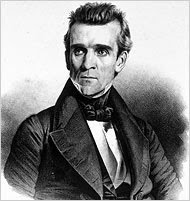Excerpts from the review of this book authored by Alison Gopnik of Berkeley, reviewed by Mark Sloan, in a special to The Chronicle:
.
Baby brains are very different from those of adults. The prefontal cortex--the center of such "adult" activities as thinking, planning and inhibiting thoughts that distract us from the task at hand--is much less developed, for example. As a result, babies are more impulsive, less-wired for inhibition and, Gopnick suggests, "aware of much more, much more intensely, then we are."
.
She likens a bably's attention to a lantern, casting its light in all directions, illuminating the nooks and crannies of a strange, new world--perfect for learning a great deal in a short time. Adult attention, given our abjility to focus and shut out distractions, is more like a spotlight. We can write reports and meet deadlines like crazy, but we also miss a lot of interesting things going on around us. Babies, though, notice everything.
.
It's that lantern-like conciousness that allows a baby to construct a mental map of her world and how it works. . . . Gopnik's research proves that even 1-year-olds are capable of counterfactual thought--that "coulda-woulda-shoulda" thinking that allows us to learn from experience, consider possibilities and change our future behavior accordingly.
.
Humans have by far the longest childhood of any primate species. Gopnik presents compelling evidence that this period of extended helplessness is actually a key to our evolutionary success. Lantern consciousness, counterfactual thinking and imaginative play allow children to explore alternative worlds and scenarios. During this period of "paradoxically useful uselessness," children learn to see the world as it could be, and to make plans to create that world--skills that will be crucial in an ever-changing adult society. Play is indeed the work of childhood, and it has been since the dawn of Homo sapiens. . . Children, she writes, help provide answers to deep, meaning-of-life questions. They "put us in touch with important, real and universal aspects of the human condition," such as awe, magic, beauth and truth.
.
Babies and children are our future, in more than the simple genetic sense. They will one day dramatically reshape our world, as every generation before them has done. We would be wise in this era of diminishing resources and test-obsessed education to provide them with the love, security and unstructured time they need to play, imagine and explore the vast range of human possibilities. Because the very people who will ultimately create the world of the future, "the explorers we set out there at the farthest edge," as Gopnik concludes in her moving final chapter, "look very much like our children."
---Sunday, August 16, 2009 San Francisco Chronicle
 36-year-old biochemist, Raven Hanna, designs jewelry made of sterling silver to resemble molecules, some of which affect human emotions: theobromine, caffeine, serotonin, dopamine and others. "I love the way people gravitate to the aesthetics of my jewelry," she said. Her creations often sell for $75 to $130. To purchase or find out more about Raven Hanna's jewelry, visit www.madewithmolecules.com
36-year-old biochemist, Raven Hanna, designs jewelry made of sterling silver to resemble molecules, some of which affect human emotions: theobromine, caffeine, serotonin, dopamine and others. "I love the way people gravitate to the aesthetics of my jewelry," she said. Her creations often sell for $75 to $130. To purchase or find out more about Raven Hanna's jewelry, visit www.madewithmolecules.com








